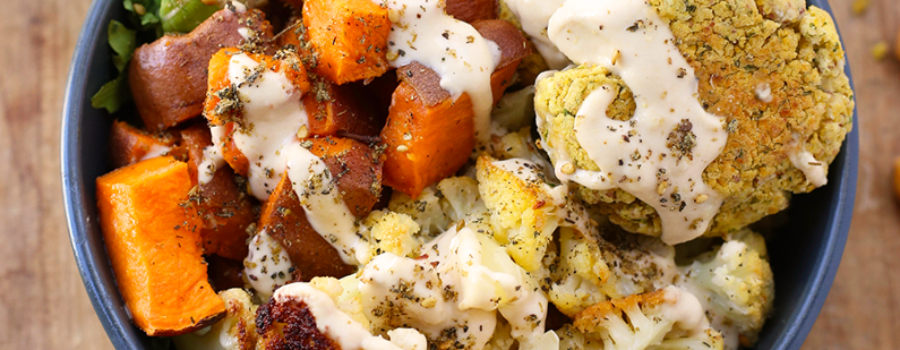Understanding Fat

Brown Fat and White Fat
Brown Fat
Brown fat is composed of several small lipid (fat) droplets and a large number of iron-containing mitochondria (the cell’s heat-burning engine). People with lower body mass indexes (BMIs) tended to have more brown fat and has the ability to burn calories
The iron, along with lots of blood tiny blood vessels, gives this fat its brownish appearance. Brown fat is usually found in the front and back of the neck and upper back.
Brown fat burns calories in order to generate heat. That’s why brown fat is often referred to as the “good” fat, since it helps us burn, not store, calories. Brown fat is derived from muscle tissue and is found primarily in hibernating animals and newborns. After life as an infant, the quantity of brown fat significantly decreases. Adults who have comparatively more brown fat tend to be younger and slender and have normal blood sugar levels.
Spending time in the cold makes your brown fat more active and could even cause you to grow new brown-fat cells.
White Fat

White fat has many purposes. It provides the largest energy reserve in the body.
It’s a thermal insulator and cushion for our internal organs, and cushions during external interactions with our environment (that’s code for a soft landing when we fall on our behind!).
It is a major endocrine organ, producing one form of estrogen as well as leptin, a hormone that helps regulate appetite and hunger. The other hormone that works with leptin is Ghrelin is it the hormone to tells us we are satiated, had enough to eat and we are full.
It’s also got receptors for insulin, growth hormone, adrenaline, and cortisol (stress hormone). white fat is very important to our survival. It’s a matter of how much and where it’s located. You want to control your visceral fat level (around the waistline)
keeping your waist circumference to less than 89cm (35 inches) if you’re a woman, and to less than 102cm (40 inches) if you’re a man and keep your total body fat within the normal ranges for each gender.
Does white fat interact with brown fat? YES
New research shows that when people overeat, they not only increase their total amount of white fat, but the overconsumption results in their brown fat becoming dysfunctional and thus unable to burn calories.

Location of the White Fat is important
An excess of white fat inside the belly (visceral fat) is associated with metabolic syndrome—a group of symptoms that signal an increased risk for heart disease, diabetes, and cancer.
Excess white fat throughout the body is associated with an increased risk of breast, colon, esophageal, gall bladder, and pancreatic cancer.
It’s also associated with sleep apnea, and physical disabilities such as knee arthritis.
In women, excess fat accumulates around the hips, thighs, buttocks, and breasts until perimenopause (the 40s), when fat is redistributed to the abdomen as well. Men tend to gather excess fat primarily in the belly region most of their lives.
Leptin HormoneThe hormones leptin, insulin, oestrogens, androgens and growth hormone influence our appetite, metabolism and body fat distribution. People who are overweight have hormone levels that encourage the accumulation of body fat.
Leptin is sometimes called the satiety hormone. It helps inhibit hunger and regulate energy balance, so the body does not trigger hunger responses when it does not need energy.
When levels of the hormone fall, which happens when an individual loses weight, the lower levels can trigger huge increases in appetite and food cravings which can make weight loss more difficult.
When the body is functioning properly, excess fat cells will produce leptin, which will trigger the hypothalamus to lower the appetite, allowing the body to dip into the fat stores to feed itself.
Leptin
Leptin reduces a person’s appetite by acting on specific centres of their brain to reduce their urge to eat. It also seems to control how the body manages its store of body fat.
Because leptin is produced by fat, leptin levels tend to be higher in people who are obese than in people of normal weight. However, despite having higher levels of this appetite-reducing hormone, people who are obese aren’t as sensitive to the effects of leptin and, as a result, tend not to feel full during and after a meal.
Ghrelin Hormone
Ghrelin is a hormone that is produced and released mainly by the stomach with small amounts also released by the small intestine, pancreas and brain.
Ghrelin has numerous functions. It is termed the ‘hunger hormone’ because it stimulates appetite, increases food intake and promotes fat storage.
Ghrelin levels are primarily regulated by food intake. Levels of ghrelin in the blood rise just before eating and when fasting, with the timing of these rises being affected by our normal meal routine.
Different nutrients slow down ghrelin release to varying degrees; carbohydrates and proteins restrict the production and release of ghrelin to a greater extent than fats.

Insulin and Insulin ResistanceInsulin is a hormone that helps your body control the amount of sugar (glucose) in your blood. It is produced by the pancreas.
Insulin controls the amount of sugar from digested foods circulating in your bloodstream, and allows cells to use the sugar for fuel or be stored for future needs.
When you eat, your body senses that and signals your pancreas to release insulin.
Insulin unlocks the cell, so glucose can move from the blood into the cell to provide energy. Blood glucose is sometimes called “blood sugar.
Your body releases insulin in response to glucose, amino acids and fats in your meals, and its secretion is highest when you eat sugary foods.
When your system gets loaded with glucose, it causes a shift in your metabolism. It slows down the breakdown of fat. More importantly, it starts the synthesis of new fat.
Insulin redirects excess glucose into fat cells
When you become resistant to insulin, it means the key is not turning the locks the way it is supposed to. Glucose is not entering into the cells and fat synthesis is on the rise
Insulin resistance is when the liver and muscle cells stop responding properly to insulin.The initial response of the pancreas is to make more insulin to help glucose enter cells, but the pancreas usually cannot keep making more and more insulin to overcome the insulin resistance. Eventually the insulin-producing cells of the pancreas start to burn themselves out and blood glucose levels start to rise (hyperglycaemia).
Insulin and Leptin
One hit of fat can start causing insulin resistance, inhibiting glucose uptake after just 160 minutes
Fat in the bloodstream can build up inside the muscle cell and create toxic fatty breakdown products and free radicals that can block the insulin signalling process. When that happens, no matter how much insulin we have in our blood, it won’t be able to open the glucose gates. That causes blood sugar levels to build up in the blood.
A high intake of dietary fat causes lipid overload and insulin resistance in the muscle and liver.
Being overweight with a lot of body fat and a lot of leptin in their bloodstream prevents the brain receiving the signal that you are satiated and have eaten enough.
When you are overweight, the brain is not signalled by the leptin to stop eating or you are ”full” it thinks you are starving.
This is known as leptin resistance and is believed to be a leading driver of obesity
Insulin is the hormone that tells our cells to pick up glucose from the bloodstream. It is also the major energy storage hormone in the body. It tells our cells to store energy, either as glycogen or fat, one of the ways that insulin contributes to obesity, is by blocking the leptin signal in the brain
High insulin > No leptin signal
Leptin and Thyroid
Your thyroid secretes hormones that act throughout the body, influencing metabolism, growth and development. The amount of leptin available to your brain has a major influence on how many thyroid hormones are released into the body.
Leptin holds the purse strings on your energy spend, based on our available food supply. When your body can’t use leptin efficiently, it goes into a fake starvation mode known as leptin resistance. Leptin Resistance throws a monkey wrench into your thyroid function. Leptin tells the TRH (thyroid releasing hormone) in your hypothalamus to set the thyroid hormones on low energy, otherwise the body may perish from starvation.
The hypothalamus impacts how much TSH (thyroid stimulating hormone) your pituitary gland will produce. Subsequently, your brain unwittingly depresses your metabolism so that you can survive a faulty famine, making weight loss nearly impossible and even promoting weight gain.
C–reactive protein (CRP) is a protein made by the liver and secreted into the blood. It is often the first evidence of inflammation or an infection in the body.
C–reactive protein (CRP) is a protein made by the liver and secreted into the blood. It is often the first evidence of inflammation or an infection in the body.
Stress Causes Weight Gain
Levels of “the stress hormone,” cortisol, rise during tension-filled times. This can turn your overeating into a habit. Because increased levels of the hormone also help cause higher insulin levels, your blood sugar drops and you crave sugary, fat and salt.
Reset Your Body’s Digestive Health
- Reset your body’s digestive health by cleansing your diet of pro-inflammatory foods and detoxing your liver. Pumpkin and sesame seeds, chilies, bay leaf and lime.
- lower insulin levels, support good digestion, dampen hunger and detox your liver. To make detox water, mix half of a lemon, a one-inch piece of fresh ginger, a pinch of cayenne pepper and four cups of water. Drink 8 cups per day
- you should cut out processed foods high in carbs and sugar, which wreak havoc on hormones such as insulin and ghrelin that are needed to control blood sugar and appetite. These foods may also lead to inflammation, which can increase cortisol levels and promote storage of belly fat.
- Eat at least 35 grams of fibre a day (lots of vegetables and fruits) to help promote good digestion and to keep you full.
- Get sufficient sleep and avoid eating late.
- Intermittent Fasting


 Understanding Fat" width="900" height="350"/>
Understanding Fat" width="900" height="350"/>



